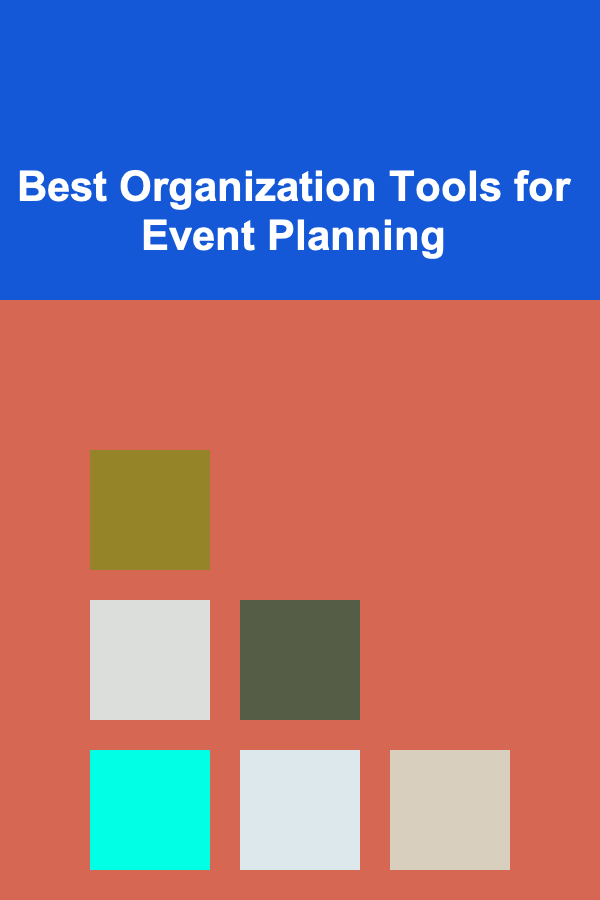
10 Tips for Adapting Tennis Coaching to Different Age Groups
ebook include PDF & Audio bundle (Micro Guide)
$12.99$11.99
Limited Time Offer! Order within the next:
Not available at this time

Tennis is a sport that transcends age and skill level, making it accessible to individuals of all ages. Whether you're coaching young beginners, teen players, or adults, it's essential to tailor your coaching techniques to the specific needs and developmental stages of each age group. An effective coaching approach requires an understanding of physical, emotional, and mental differences across age groups, as well as an appreciation for the skills and motivations unique to each demographic.
This article will explore ten key tips for adapting your tennis coaching strategies to different age groups, ensuring your players have a positive and productive learning experience. By addressing each age group's unique characteristics, you can create a more engaging and effective coaching environment.
Understand the Physical Development of Each Age Group
When coaching players across various age groups, it's crucial to recognize the differences in physical development. A young child's body is not yet capable of handling the same physical demands as an adolescent or adult. Therefore, it's important to tailor your training sessions to the capabilities of each age group.
- Young children (Under 10 years old): Children in this age group are still developing coordination, balance, and motor skills. Sessions should focus on building basic hand-eye coordination, agility, and fun movement activities. Avoid overloading them with complex techniques that may lead to frustration.
- Adolescents (10-18 years old): Teenagers are experiencing rapid physical growth, which can sometimes lead to awkwardness or inconsistency in their movements. It's a good time to introduce more technical drills, focusing on building stroke consistency and improving footwork. You should also start incorporating fitness elements like endurance, strength, and flexibility, but avoid pushing too hard too quickly.
- Adults (18 years and older): Adults are generally physically mature but may be at varying levels of fitness depending on their background. For older players, the focus can be on refining skills and improving mental toughness. Exercises can be more intense, but they should still consider the player's fitness level and injury history.
By recognizing and accommodating the physical differences of each age group, you can create a training environment that is both safe and effective.
Tailor Drills and Activities to Match Skill Levels
The complexity of drills should be appropriate to the skill level and age group you are working with. Younger players, particularly those just starting tennis, may need simple drills that build confidence and basic skills. On the other hand, more experienced players need drills that challenge their technique, stamina, and strategy.
- For younger players: Use fun, engaging activities that promote basic skills such as hitting against a wall, rallying with a partner, or using soft balls to keep the pace slow. The key is to keep it playful and not focus too much on the technical aspects of the game. You might use smaller racquets or low-compression balls to make the game easier and more enjoyable.
- For teenagers: Incorporate more structured drills that focus on specific aspects of the game like serving accuracy, rallying from different court positions, or developing different spin techniques. At this stage, players can start focusing on match-play tactics and strategy while also working on refining their physical conditioning.
- For adults: Tailor drills to the individual's goals, whether it's improving their fitness, refining technique, or learning match strategies. Adults might benefit from competitive drills that simulate match conditions, including point-based drills, serving challenges, and game situations.
Ensuring that drills are developmentally appropriate will help each age group progress at the right pace without feeling overwhelmed or underchallenged.
Encourage Positive Emotional Development
Emotional maturity plays a big role in how players respond to coaching, especially in competitive environments. Younger players may struggle with frustration, while teens might be more susceptible to pressure and self-doubt. Adults may have a different set of emotional challenges, such as balancing tennis with other life responsibilities.
- For younger players: Focus on creating a positive and supportive atmosphere that encourages exploration and fun. Praise effort and improvement, not just outcomes. Since children are still developing emotional regulation, help them learn to handle setbacks, such as losing a point or game, in a constructive way.
- For teenagers: Adolescents are more emotionally volatile, and their self-esteem can often be tied to success or failure in sports. Be patient and offer consistent feedback, helping them build mental resilience. Teach them to focus on the process rather than the result, and emphasize the importance of teamwork and positive self-talk. Also, encourage healthy competition and the ability to learn from both wins and losses.
- For adults: Adult players are often dealing with work-life balance, which can create stress during training or matches. As a coach, you should be empathetic to their time constraints and emotional state. Encourage them to set realistic goals and be kind to themselves. It's important to foster a growth mindset, especially when adults are working on improving their skills after years of playing or when they're managing performance anxiety.
By understanding how emotional needs change with age, you can provide appropriate encouragement and develop a mentally healthy approach to tennis.
Adjust Communication Styles
How you communicate with different age groups can significantly affect the outcome of your coaching. A one-size-fits-all approach rarely works, and adjusting your communication style can make a big difference in a player's engagement and learning.
- For young children: Use simple language and clear instructions. Keep your communication light, enthusiastic, and fun to maintain their interest. Encourage verbal expression and ask them how they feel about their play to help them develop a relationship with their emotions.
- For teenagers: Adolescents can be more self-conscious and sensitive to criticism, so it's important to give balanced feedback. Provide specific, actionable feedback that encourages improvement while still acknowledging their efforts. They may also appreciate more autonomy in their learning, so encourage them to ask questions and voice concerns about their training.
- For adults: Adults tend to appreciate more direct and clear communication. Use positive reinforcement and constructive criticism, but also acknowledge the external factors they might be juggling. Providing goal-setting strategies and asking them about their goals outside of tennis will help create a more personalized coaching experience.
Effective communication with each age group fosters trust and creates a more productive learning environment.
Create Age-Appropriate Fitness and Conditioning Plans
Fitness and conditioning are essential elements of tennis coaching, but the demands of training vary greatly across different age groups. Children and teens require age-appropriate fitness plans that focus on overall development, while adults might require more specific conditioning based on their goals.
- For young players: Focus on general physical activity that promotes flexibility, agility, and coordination rather than heavy physical training. Kids benefit from games and exercises that help develop their motor skills while maintaining a fun, playful atmosphere.
- For teenagers: Strengthen the core and leg muscles to improve stamina and explosive power. Agility drills are key for teens to improve their court movement and overall athleticism. You can start adding more structured fitness plans that involve aerobic conditioning and short-burst sprints.
- For adults: Conditioning for adults should be individualized based on their fitness levels and any injuries they might have. For many adult players, fitness might focus more on endurance, injury prevention, and flexibility. Proper warm-ups and cool-downs are essential, especially for older adults or those who are returning to tennis after a long break.
A tailored fitness plan for each age group ensures that players are developing physically in ways that are safe and effective for their bodies.
Make the Environment Age-Appropriate
The learning environment plays a major role in the development of tennis players. Children and teens benefit from a lively, dynamic environment that emphasizes social interaction and competition, while adults may appreciate a more structured and focused setting.
- For young children: Create a fun, colorful, and inviting environment. Kids enjoy games, friendly competitions, and visual stimuli, such as colorful cones, hoops, or soft tennis balls. The focus should be on enjoyment, making learning fun and exciting.
- For teenagers: Teenagers may enjoy a more competitive atmosphere where they can challenge their peers. Having a structured routine with clear progress markers and performance goals will help them stay engaged. The environment should foster healthy competition, but also encourage team spirit and camaraderie.
- For adults: Adults often appreciate an environment that is organized, calm, and purposeful. Since they may have limited time, efficiency becomes a priority. A more personalized and goal-oriented environment, with focused drills and strategic discussions, works well for adult players.
The environment you create will directly impact the learning experience for each age group, so it's important to tailor the atmosphere to the players' needs.
Foster Long-Term Development with Goal Setting
Goal setting is crucial for players of all ages. While young children may not have the cognitive ability to set complex goals, teens and adults can benefit from having specific, measurable, and achievable targets in place.
- For young children: Instead of focusing on specific performance goals, set simple goals such as improving their serve accuracy or having fun with a partner. Goals should be process-oriented rather than outcome-based, helping to develop a love for the game and a sense of achievement.
- For teenagers: Teens benefit from both short-term and long-term goals. They may be working on technique, improving match results, or focusing on a specific aspect of their game. Encourage them to set goals and track their progress, which will help them stay motivated and improve their skills.
- For adults: Adults might have a variety of goals, ranging from improving their fitness, reducing stress, or competing in tournaments. Help them set realistic goals that align with their lifestyle, fitness levels, and personal motivations. Periodically reassess and adjust goals to keep them engaged and on track.
Goal setting fosters a sense of achievement and encourages continued development across age groups.
Focus on Mental Toughness Training
Mental toughness is an important skill for any tennis player. While mental resilience is developed differently depending on the age group, it's an essential part of every player's development.
- For young children: Teach kids the importance of persistence, patience, and staying positive even when things don't go as planned. Introduce simple mindfulness exercises or breathing techniques to help them relax and stay focused.
- For teenagers: Adolescents are at a stage where they may struggle with self-confidence, especially after setbacks or losses. Encourage positive self-talk and teach strategies to cope with performance anxiety, such as visualization techniques or focus exercises.
- For adults: Adults may face mental challenges related to stress, performance anxiety, or balancing their tennis goals with other responsibilities. Help them develop a mental toolkit that includes relaxation techniques, focus drills, and mindfulness practices to build mental resilience.
By focusing on mental toughness, you empower players of all ages to handle challenges both on and off the court.
Foster a Love for the Game Across All Ages
While coaching different age groups, always emphasize the importance of enjoying the sport. Regardless of age, fostering a love for tennis ensures that players remain motivated and passionate about their development.
- For young children: Focus on playfulness and enjoyment rather than perfection. Encourage exploration and curiosity about the game to build a foundation of love for tennis.
- For teenagers: Help teens discover the personal benefits of tennis, such as teamwork, fitness, and the mental challenge. Emphasize the fun and social aspects of the sport while also encouraging competitive growth.
- For adults: Remind adult players of the joy of playing tennis and its numerous health benefits. Whether it's for fitness, relaxation, or competition, help them connect with the fun aspects of the game.
Ensuring that every age group experiences the joy of playing tennis will keep them engaged and motivated for years to come.
Keep Things Fun and Engaging
Regardless of age, tennis is ultimately a game. Keep the sessions engaging, lively, and enjoyable to maintain players' motivation and excitement. Use variety in drills, games, and match scenarios to keep the sessions fresh and prevent boredom.
By keeping things fun, you ensure that players of all ages remain engaged and excited about improving their skills and enjoying the game.
In conclusion, adapting your coaching strategies to different age groups is essential for fostering long-term development and enjoyment of tennis. Whether you're working with children, teens, or adults, the key is to tailor your approach to suit the specific needs and characteristics of each age group. Through age-appropriate drills, communication, emotional support, and goal-setting, you can create an environment that encourages growth, enjoyment, and success for players of all ages.

Best Organization Tools for Event Planning
Read More
Earning Passive Income by Creating AI-Powered Websites
Read More
How to Decorate Your Home for the Holidays Without Overwhelming the Space
Read More
How to Stage a Bathroom to Make It Feel Spa-Like
Read More
Simplifying Your Pet's Belongings: A Comprehensive Guide
Read More
Optimizing Your Nutrition for Radiant Skin Health: A Deep Dive
Read MoreOther Products

Best Organization Tools for Event Planning
Read More
Earning Passive Income by Creating AI-Powered Websites
Read More
How to Decorate Your Home for the Holidays Without Overwhelming the Space
Read More
How to Stage a Bathroom to Make It Feel Spa-Like
Read More
Simplifying Your Pet's Belongings: A Comprehensive Guide
Read More